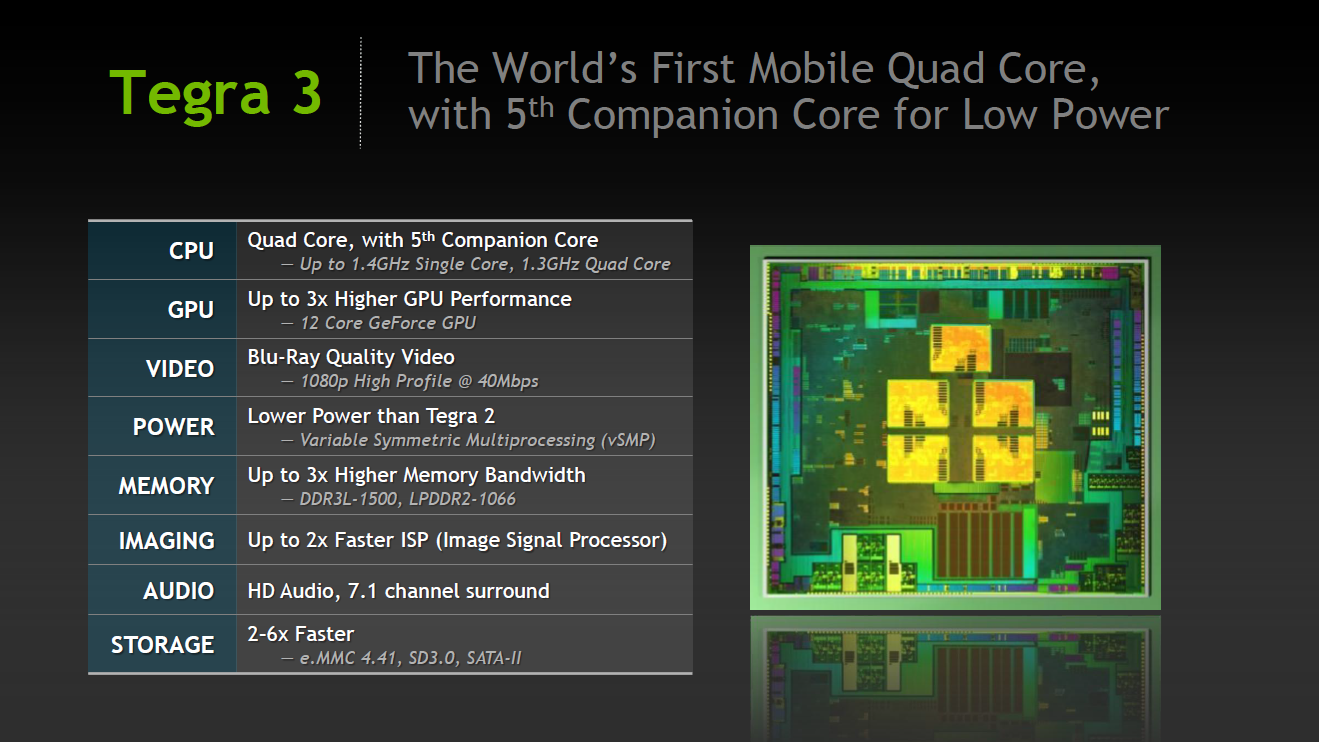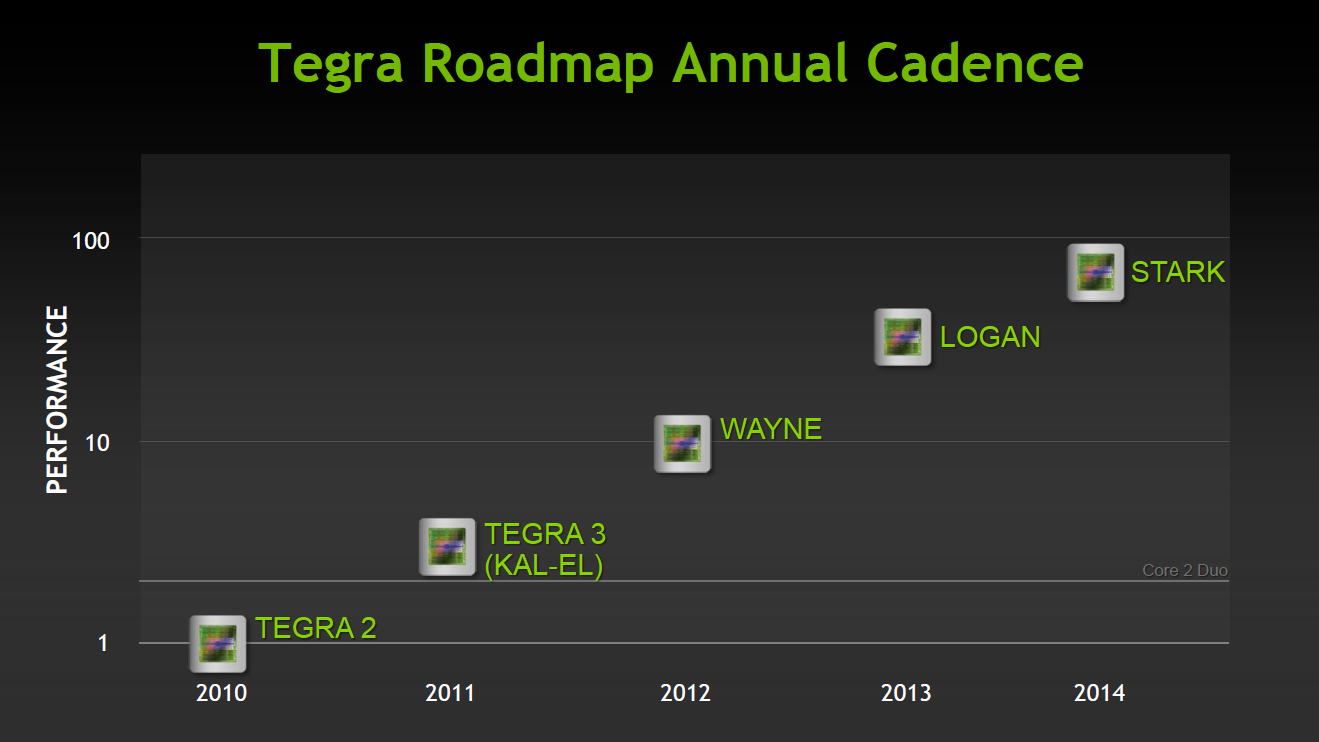The performance crown is secured by NVIDIA
NVIDIA has a very interesting system processor coming. If performance in relation to battery time lives up to expectations it will be one of the more interesting products in a long time. Even though we are still at 40nm it has added two cores, increased the clock frequencies over Tegra 2 and graphics performance, while also reducing energy consumption. This is proof that nodes are not the only ingredient needed to make an efficient system, but also innovations like vSMP play a big part.
 When it comes to the performance of Tegra 3, it will be the most powerful processor we have seen in a smartphones or tablet. The graphics has been upgraded over Tegra 2, but it is most likely not enough to stand up to the powerful GPU of Apple A5. Tegra 3 will sport four cores that can operate at up to 1.3 GHz, this while most dual-core system processors operate at 1.0 – 1.2 GHz, and lately even 1.5 GHz.
When it comes to the performance of Tegra 3, it will be the most powerful processor we have seen in a smartphones or tablet. The graphics has been upgraded over Tegra 2, but it is most likely not enough to stand up to the powerful GPU of Apple A5. Tegra 3 will sport four cores that can operate at up to 1.3 GHz, this while most dual-core system processors operate at 1.0 – 1.2 GHz, and lately even 1.5 GHz.
Other SoC manufactuerers have revealed that they will not do quad-core chips at 40nm. Considering the health of 28nm at TSMC and the low capacity this could mean that NVIDIA will be the sole quad-core chip provider for another six months. The other companies will releaunch older circuits with higher clock frequencies, but besides that we won’t have much new to look forward to.
Such a headstart also means that NVIDIA can lure more partners to the Tegra concept, since new circuits from other companies are long into the future. Next year we not only expect system processors with more cores, but also with the next generation architecture from ARM. Cortex-A15 will bring better performance than Intel Atom at lower energy consumption. It may not sound like much in performance, but Cortex-A9 is actually behind Atom there.

However, the first circuits at 28nm are expected to be Cortex-A9 based, but should at least be able to compete with Tegra 3 or even outperform NVIDIA, even though the bar is set up high. This is once again well into the future and NVIDIA has promised a new Tegra product annualy. So a few months after the competition counters, NVIDIA will bring the next system processor in the upper performance class.
What makes it interesting is the performance, that according to NVIDIA will be on par with Core 2 Duo at 2.0 GHz. While we can’t blindly believe this it should be in the region we have seen here. This means we have an ARM-based circuit that should cover the need of most people. The only thing missing is the software to make it a full alternative for a notebook or simpler desktop, to compete with x86 processors from AMD and Intel. It is just a matter of time when Tegra 3 will appear in a notebook and we suspect this will be around the launch of Windows 8.
We round off with that NVIDIA has developed a product that we believe can become a bigger success than Tegra 2. It is a great product on paper, and we eagerly await the first test products with Tegra 3, and see if they live up to the promises. The potential for the future is exciting since x86 is in need of competition…

















